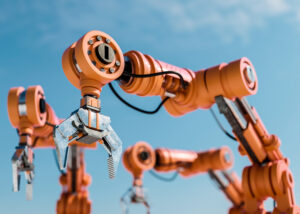Introduction
Hook: In 2023, over 170,000 humanoid robots actively assist humans globally, blurring the lines between science fiction and reality. Rapid advancements in robotics prompt a critical exploration of their promises and challenges. Are we on the brink of a technological utopia, or does the ascent of humanoid robots bring unforeseen consequences?
Definition: A humanoid robot, defined as a robot that looks like a human and mimics human movements, is currently proliferating across various fields such as the military, industries, homes, etc. For more..

1.What will humanoid robots be used for?
Humanoid robots are used in various sectors:
- Industrial use: Industries employ these robots for various purposes.
- Domestic use: People use robotics domestically for a range of tasks
- Entertainment purposes: Robotics serves entertainment purposes, captivating audiences with its diverse applications.
- Medical applications: Medical professionals apply robotics in various healthcare applications.
- Military and government use: Military and government entities utilize robotics for strategic and operational purposes.

Interested in learning about the types of robots?
2.Advantages and disadvantages of humanoid robots
Advantages of humanoid robots:
1.Versatility in Tasks:
- Definition: These robots can do lot of stuff, like carrying objects,etc just like a human beings.
- Purpose: These are helps in industries like manufacturing and healthcare because they can handle both easy and tough tasks.
- Example: Check out Boston Dynamics’ Atlas – it can move around in all sorts of environments, carrying things.

2.Human Interaction:
- Definition: These robots talk and work with humans in a way that feels totally natural.
- Purpose: These robots best for jobs like customer service,delivery products,and a best friends, etc.because they’re good at chatting and understanding emotions.
- Example: Shopia robot is best example for human interaction.

3.Assistance to the Elderly and Disabled:
- Definition: These robots are can helps to elder and disabled peoples to make their life easier.
- Purpose: Giving a hand to lonely elders and disabled to make their lives happy and easier.
- Example: Take a look at Toyota’s Human Support Robot (HSR) – it fetches things around the house and keeps company for people with mobility issues.

4.Efficiency in Hazardous Environments:
- Definition: These robots are like superheroes in dangerous places, doing jobs that could be risky for humans.
- Purpose: They focus on accomplishing tasks in areas deemed too hazardous for humans, such as disaster response or the exploration of unknown territories.
- Example: NASA’s Valkyrie is a humanoid robot made for disaster response and exploring places like Mars.

5.Enhanced Learning and Training:
- Definition: Humanoid robots are used in schools and many more places to educate the people like languages and other.
- Purpose: Make more easier to understand subjects to students.
- Example: Eagle robots using to students in some schools.
Disadvantages of humanoid robots:
1.High Costs: Developing and manufacturing humanoid robots involves advanced technologies and complex engineering, leading to high production costs. This cost factor can limit their accessibility and practicality for widespread adoption.
2.Ethical Dilemmas: The progression of humanoid robots sparks ethical inquiries regarding their societal role. Ongoing discussions revolve around concerns such as robot rights, the potential displacement of jobs, and the delicate balance between human and machine interactions.
3.Human thread: Although robots can be superior to humans in some ways, they are less dextrous than humans, they don’t have such powerful brains, and cannot compete with a human’s ability to understand what they can see.
4.Over-dependence on technology: As soon as robots assume a significant role in our daily lives, people may develop a dependency on this technology, prompting the addition of more functions to streamline our daily activities. The reduction in human interactions and physical movements may prove detrimental to our well-being. Furthermore, the absence of a contingency plan could result in severe disruptions if any automated system experiences a technical issue, negatively impacting the entire process.
5.Potential Job Losses: The effect on people who may lose their jobs due to the deployment of robots is one of the main worries. In the future, there could not be a need for human involvement in some tasks since a robot can provide results more quickly, with more detail and accuracy.
Conclusion:
In conclusion, the proliferation of humanoid robots presents a dual landscape of promises and challenges. While their versatility, human interaction capabilities, assistance to the elderly, efficiency in hazardous environments, and enhanced learning potentials showcase the positive aspects, high costs, ethical dilemmas, limitations in comparison to human abilities, over-dependence on technology, and potential job losses raise concerns. Striking a balance between harnessing the benefits and addressing the drawbacks is crucial. Vigilant ethical considerations, ongoing technological advancements, and thoughtful societal integration will determine whether humanoid robots propel us towards a technological utopia or necessitate careful navigation through unforeseen consequences in the evolving realm of robotics.
FAQs:






5 thoughts on “Advantages and disadvantages of humanoid robots”